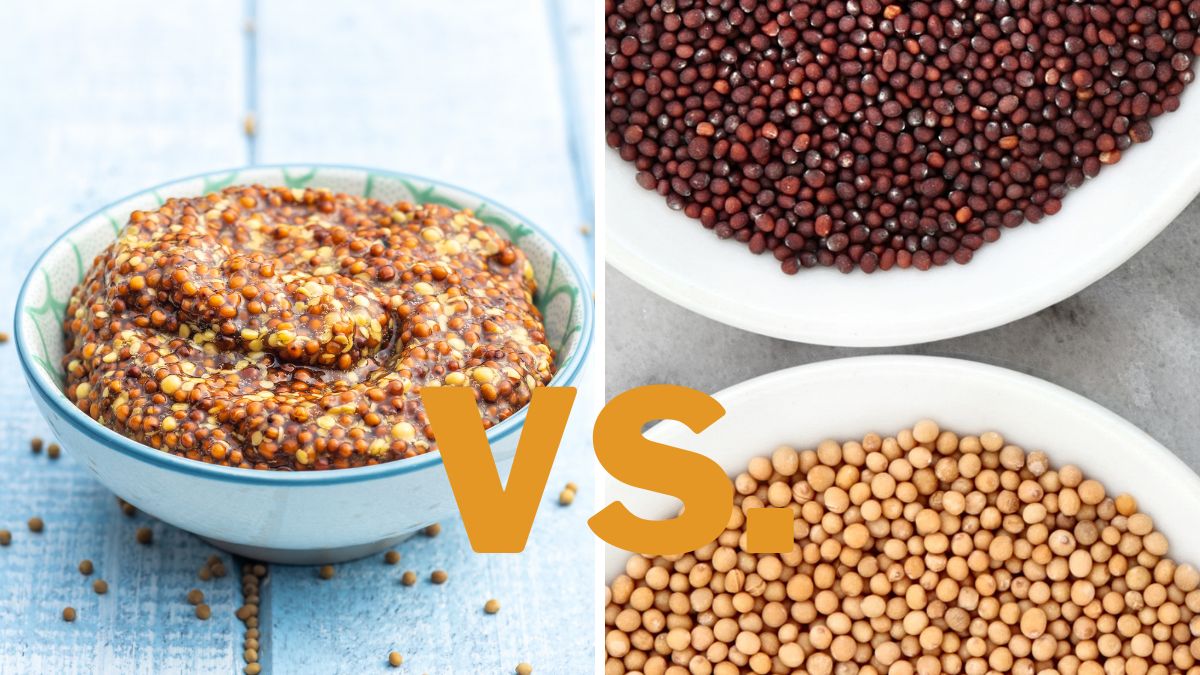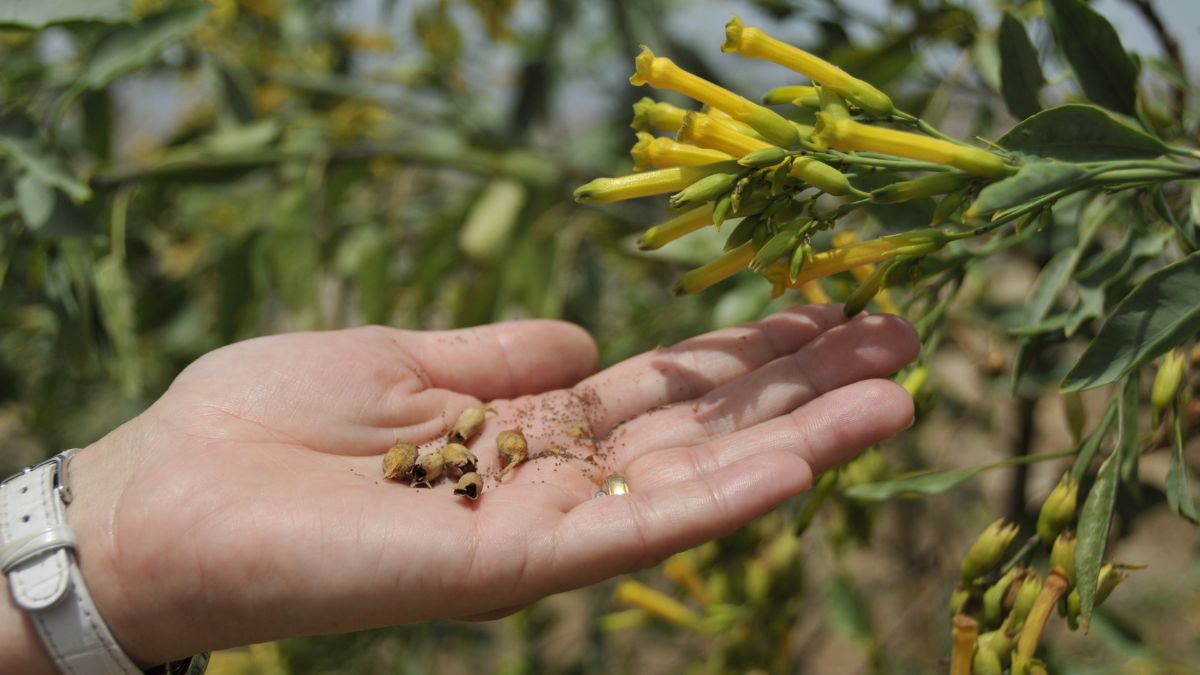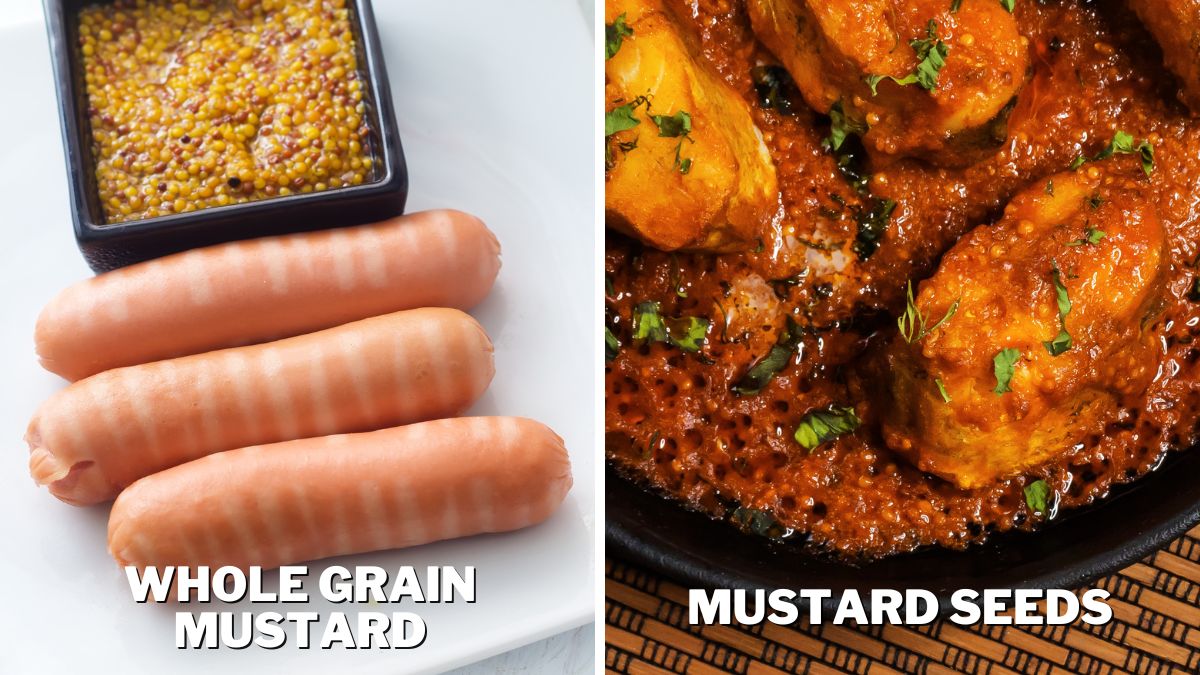Whole Grain Mustard vs. Mustard Seed: Difference & Use

The difference between whole grain mustard and mustard seed isn’t something people usually think about, but it’s there, and it’s pretty substantial. The other day I had a discussion with my friend who claimed that whole-grain mustard and mustard seed were actually the same thing — he actually thought that mustard seeds come in the form of whole-grain mustard. This discussion made me write an article explaining the differences. So, what are the differences between whole-grain mustard and mustard seed?
Whole-grain mustard is made from coarsely ground mustard seeds mixed with vinegar, water, salt, and other flavorings. It has a grainy texture with a tangy, spicy, and slightly bitter taste. Mustard seeds are tiny seeds from the mustard plant and can be used whole or ground to add pungency and heat to dishes.
Whether you use whole grain mustard or mustard seed, you have to know the differences between them because everything will go south if you use the wrong kind for what you need. I will explain the differences between the two and tell you the best way to use each so you can make some magic in your kitchen. So, let’s go!
What Is Whole Grain Mustard?
In a nutshell, whole-grain mustard is a derivative of mustard seeds. It’s practically crushed mustard seeds into a coarse mixture, not so much to turn them into a paste, but not as little to leave them whole.
Whole grain mustard is made of coarsely ground mustard seeds mixed with vinegar, water, salt, and sometimes other flavorings such as herbs or spices. You see this type of mustard on store shelves in glass jars with a sticky, grainy mixture inside.
The mustard seeds used in whole-grain mustard are typically brown or black mustard seeds. The resulting condiment is grainy with visible mustard seeds. It offers a combination of tanginess, spiciness, and a subtle crunch.
Subjectively, I prefer Dijon or yellow mustard because they are smooth, but I like to surprise my palate with whole-grain mustard every now and then. It’s definitely more than delicious, and you will enjoy it if you don’t mind the grainy texture.
What Are Mustard Seeds?

Mustard seeds are tiny round seeds from the mustard plant. While whole-grain mustard is a condiment, mustard seeds are raw plant seeds. There are three main types of mustard seeds, i.e., yellow, brown, and black mustard seeds, used to make different types of mustard.
Yellow mustard seeds are the mildest in flavor, which you can already guess by yellow mustard. Brown and black mustard seeds are more pungent and spicy and are used to make Dijon mustard, spicy mustard, and variation of them.
I often use mustard seeds as a spice for many dishes. They really do provide the signature mustard flavor!
Differences in Uses
Whole-grain mustard is usually used as a condiment. So you can spread it or make a dipping sauce with it. Although I am a bigger fan of creamy mustard, I get why whole-grain mustard is such a popular choice among mustard lovers. Its grainy texture and robust flavor make it an excellent accompaniment to meats, sandwiches, cheeses, and salad dressings.
It also adds both visual appeal and a unique texture to dishes, so your dishes will be prettier and more fun to chew. Also, I’ve noticed that whole-grain mustard has a more expressive flavor than creamy mustard, especially if you happen to bite into the seeds.
Since mustard seeds aren’t a condiment, you can’t use them the same way as whole-grain mustard, but there are many other ways they can enhance your food. I like using them as seasoning for my meals, and they turn out great.
Mustard seeds can also be used in pickling, curries, spice blends, and marinades. I like to dry-roast or toast them to release their flavors, but I also like to grind them into a paste or powder to create mustard condiments.
In a nutshell, mustard seeds are the main mustard ingredient, and you can process them any way you like to get whichever mustard condiment you like, as you can hear in this video.
Differences in Taste
Whole grain mustard has a strong and pungent flavor. It is expressively tangy, savory, slightly umami, and a bit bitter. If you have tried regular creamy mustard, and you probably have, you already know what whole grain mustard tastes like, but only stronger.
Mustard seeds are stronger-flavored than whole-grain mustard. The bitterness is more pronounced in them, as well as the rest of the flavors. Imagine biting into a grain of black pepper because that’s what they feel like.
Of course, the flavor of black pepper is different, but the sensation is very similar.
When to Substitute whole Grain Mustard With Mustard Seeds?

If you want to add a grander visual effect to your meal, you can substitute whole-grain mustard for mustard seeds, but it will be only a visual substitution because the taste won’t be the same. So, I strongly advise you to improvise and add vinegar and oil to your mustard seeds and craft your own whole-grain mustard.
Plain mustard seeds aren’t a whole-grain mustard substitute, and you shouldn’t use them in that way. Still, if you need whole mustard and all you have are mustard seeds, create your own whole-grain mustard using them.
When to Substitute Mustard Seeds with Whole Grain Mustard?
Whole-grain mustard can easily substitute for mustard seeds, so whenever you would use mustard seeds, feel free to use whole-grain mustard. The thing is, you can easily extract the seeds from whole-grain mustard and add them where you need to.
I usually dry and crush them to use as a spice or throw them in a dish where I want some flavorful crunch. Yum!
What’s your favorite way to use these two? Excited to read about your experiences in the comments below!
